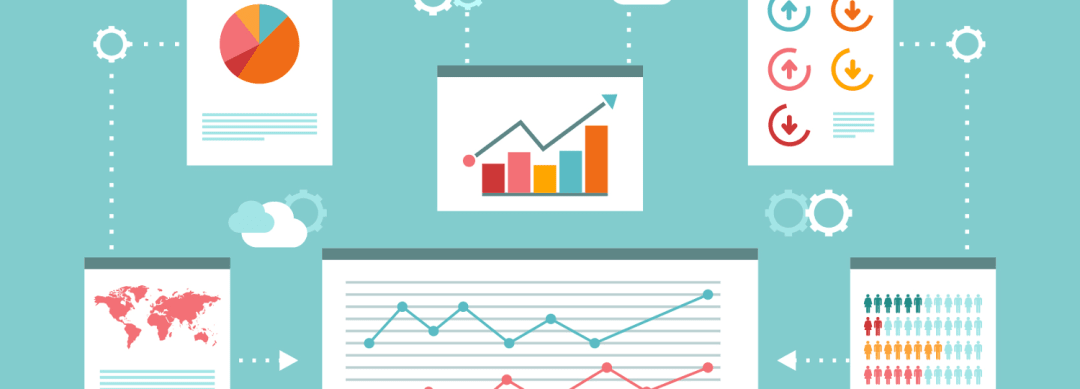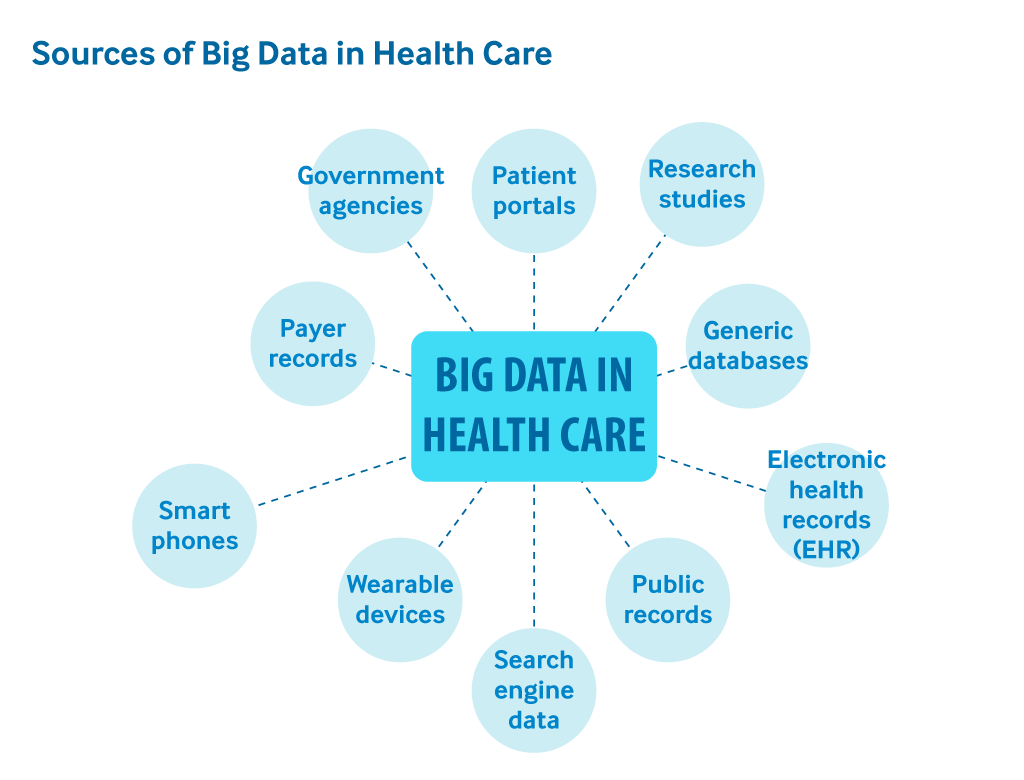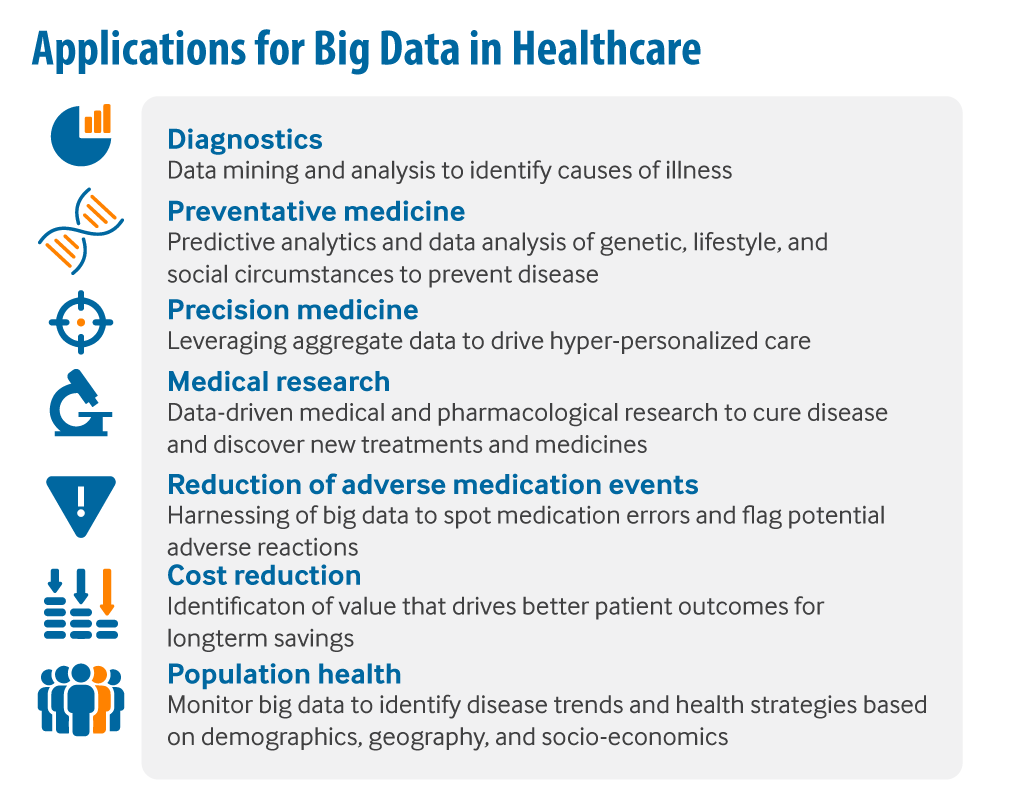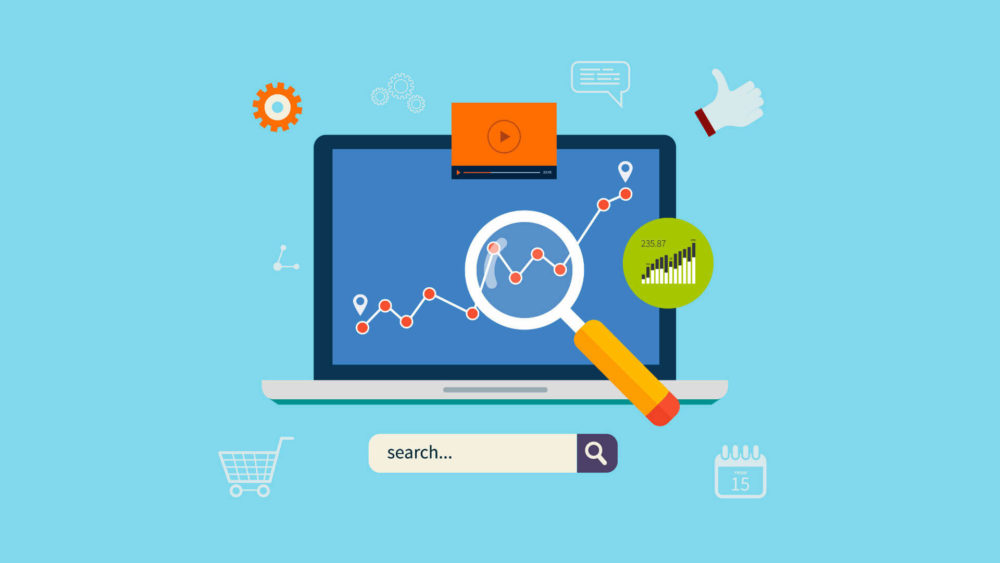Healthcare Big Data and the Promise of Value-Based Care
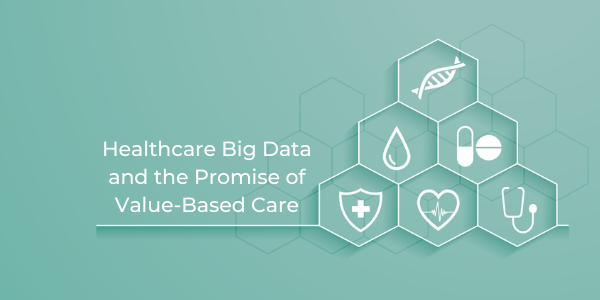
Big Data is essential to every significant healthcare undertaking. Read about the challenges, applications, and potential brilliant future for healthcare big data.
What is Healthcare Big Data?
Healthcare big data refers to the vast amount of information generated from various sources within the healthcare system. This includes electronic health records (EHRs), medical imaging, genetic data, wearable devices, patient surveys, and administrative records. The sheer volume, variety, and velocity of this data require sophisticated technologies and analytical methods to extract meaningful insights.
Sources of Healthcare Big Data
- Electronic Health Records (EHRs): EHRs provide a comprehensive view of patient health, including medical history, diagnoses, medications, and treatment plans. They are a primary source of structured data in healthcare.
- Medical Imaging: Technologies such as MRI, CT scans, and X-rays generate large amounts of unstructured data that require advanced imaging analytics for interpretation.
- Genomic Data: Advances in genomics have led to the generation of vast datasets related to genetic information, enabling personalized medicine and precision healthcare.
- Wearable Devices: Devices like fitness trackers and smartwatches collect real-time data on physical activity, heart rate, and other health metrics, providing continuous health monitoring.
- Patient Surveys and Social Media: Patient feedback and social media interactions offer valuable qualitative data on patient experiences, preferences, and trends.
The Role of Big Data Analytics
Big data analytics involves the use of advanced algorithms and statistical techniques to process and analyze large datasets. In healthcare, this includes predictive analytics, machine learning, and natural language processing. These techniques enable the identification of patterns, trends, and correlations that can drive clinical decision-making and operational improvements.
Applications of Healthcare Big Data
Patients are at the forefront of healthcare priorities, focusing on keeping them healthy and preventing disease. Consumer products like the Fitbit activity tracker and the Apple Watch monitor physical activity levels and report health trends. These results are forwarded to cloud servers, providing valuable information to doctors who incorporate it into their health and wellness programs.
Fitbit has partnered with UnitedHealthcare to reward insured individuals for regular exercise, offering up to $1,500 per year. The Informed Data Systems app, available for Android and Apple devices, is making significant changes for diabetes sufferers by managing A1c levels. Meanwhile, Apple’s HealthKit, CareKit, and ResearchKit utilize technology integrated into Apple mobile devices to help patients manage their conditions and assist researchers in gathering data from millions of users worldwide.
Expanded diagnostic services provide greater access to care for patients. Mobile apps like Aetna’s Triage use aggregated data to inform patients about their medical conditions and recommend appropriate care based on app inputs.
- Apple has collaborated with scientists at Stanford to explore whether the heart sensor on the Apple Watch can detect atrial fibrillation, a condition affecting approximately 130,000 Americans annually. If successful, the device could alert users to seek medical care when necessary.
- Propeller Health employs a Bluetooth-enabled sensor for asthma and COPD patients that fits into inhalers and spirometers. The company tracks environmental factors at sensor locations, sends reports to patients’ phones, and provides medication reminders. Propeller reports a 79 percent reduction in asthma attacks and 50 percent more symptom-free days among patients reviewed so far.
- Reducing prescription errors can enhance outcomes and save lives. According to the Network of Excellence in Health Innovation, prescription errors cost around $21 billion annually, affecting over 7 million U.S. patients and resulting in 7,000 deaths. The Israeli startup MedAware partners with healthcare organizations to use big data to identify prescription errors before they occur through its decision support tool.
Big data also helps reduce costs by providing insights that lead to improved treatments, shorter hospitalizations, and fewer admissions and readmissions for physicians.
- The Mayo Clinic uses big data analytics to identify patients with multiple chronic conditions (comorbidities) and benefit from early care interventions, potentially saving them from emergency department visits.
- Insights gained from big data analysis offer clinical knowledge that is otherwise unavailable to healthcare providers. This allows for more precise prescribing and decision-making, reducing the reliance on treatment hypotheses, lowering costs, and improving patient care.
- Large-scale healthcare data analysis also provides insights into patient cohorts at higher risk of disease, enabling a proactive approach to prevention. In summary, analyzing large-scale healthcare data can identify patients who fall outside standard care models, reveal protocols or procedures with suboptimal results or excessive costs, and be used for patient education, information, and motivation. It also enhances the efficiency and effectiveness of treatment plans by integrating financial and clinical data.
What is Value-Based Care?
Value-based care is a healthcare delivery model that emphasizes improving patient outcomes while controlling costs. Unlike traditional fee-for-service models, which focus on the volume of care provided, value-based care prioritizes the quality of care and patient satisfaction. It aims to deliver better care by rewarding providers based on the value they deliver rather than the quantity.
Key Principles of Value-Based Care
- Patient-Centered Care: Focuses on meeting the needs and preferences of patients, involving them in decision-making, and improving their overall experience.
- Outcome Measurement: Emphasizes measuring and improving clinical outcomes, patient health, and safety.
- Cost Efficiency: Aims to reduce unnecessary treatments and administrative costs while improving care quality.
- Care Coordination: Encourages seamless coordination between different healthcare providers and settings to ensure comprehensive care.
- Preventive Care: Focuses on preventing diseases and managing chronic conditions effectively to reduce the need for acute interventions.
How Big Data Supports Value-Based Care
Enhancing Patient Outcomes
- Predictive Analytics: By analyzing historical patient data, predictive models can identify individuals at high risk for specific conditions. This allows for early interventions and personalized care plans, ultimately improving outcomes and preventing complications.
- Personalized Medicine: Genomic data and other patient-specific information enable the development of personalized treatment plans. Tailoring treatments to individual genetic profiles and health conditions can lead to more effective therapies and better patient outcomes.
- Real-Time Monitoring: Wearable devices and remote monitoring tools provide continuous data on patient health. This real-time information allows for timely adjustments to treatment plans and early detection of potential issues.
Improving Care Coordination
- Integrated Data Systems: Big data analytics facilitates the integration of data from various sources, such as EHRs, imaging systems, and patient feedback. This comprehensive view of patient health enables better coordination between different healthcare providers and settings.
- Care Pathways: Analyzing data on care pathways and treatment outcomes helps identify best practices and standardize care processes. This ensures that patients receive consistent and evidence-based care across different providers.
- Communication Tools: Data-driven tools and platforms enhance communication between providers, patients, and caregivers. These tools facilitate the exchange of information, improve care transitions, and support collaborative decision-making.
Reducing Costs
- Operational Efficiency: Analyzing data on healthcare operations helps identify inefficiencies and areas for improvement. For example, big data analytics can optimize scheduling, reduce hospital readmissions, and streamline administrative processes.
- Resource Allocation: Predictive models can forecast demand for healthcare services and resources. This enables more efficient allocation of resources, reducing waste and lowering costs.
- Preventive Care: By identifying at-risk populations and implementing targeted preventive measures, big data helps reduce the incidence of costly acute interventions and hospitalizations.
Enhancing Patient Experience
- Personalized Interactions: Data on patient preferences and behavior enables healthcare providers to tailor interactions and communications. Personalized care enhances patient satisfaction and engagement.
- Feedback Integration: Analyzing patient surveys and feedback helps identify areas for improvement in the patient experience. Providers can use this information to address concerns and enhance the quality of care.
- Accessibility: Big data tools and platforms improve accessibility to healthcare services by providing patients with easy access to their health information, appointment scheduling, and telehealth options.
Read more: 5 Best Examples Of Big Data In Healthcare
Challenges for Implementing Big Data in Healthcare
Healthcare organizations face several major challenges with healthcare data, including issues related to data aggregation, policy and process, and management. Let’s explore these challenges in more detail.
Challenges in Data Aggregation
Firstly, many stakeholders, including payors, hospitals, administrative offices, government agencies, and various data storage systems, handle patient and financial information. Integrating and organizing this data requires careful planning, especially as new data continues to be generated. Each participating organization must agree on the types and formats of the large datasets they wish to analyze. Ensuring the correctness and quality of the data involves more than just addressing the format in which it is stored (e.g., paper, film, traditional databases, EHR). It necessitates data cleansing—often a largely manual process—and a review of data governance to confirm that the data has been recorded accurately and free from errors that may have accumulated over time.
Policy and Process Challenges
Once data have been validated and aggregated, various process and policy issues need to be addressed. HIPAA regulations mandate that health information be protected through strict policies and procedures. This task is complicated by requirements for access control, authentication, transmission security, and other rules. Cloud service providers, such as Amazon AWS, offer solutions that comply with HIPAA and protect personal health information (PHI), partially addressing these concerns.
Management Challenges
To fully realize the potential of big data analysis in healthcare, organizations must adapt their business practices. This often requires hiring data scientists and IT staff with the necessary analytical skills. Some organizations may need to overhaul their IT infrastructure, even though cloud service providers can mitigate some of these concerns. Additionally, doctors and administrators may take time to trust and act upon insights derived from big data.
The Brilliant Future for Big Data in Healthcare
The future of healthcare is becoming increasingly promising as industry leaders declare their big data initiatives successful and transformative. Below are a few areas where large datasets are poised to drive significant changes in healthcare:
Precision Medicine
The All of Us research program aims to enroll one million people to volunteer their health information. This initiative, part of the NIH Precision Medicine Initiative, seeks to understand how individual genetics, environment, and lifestyle can inform personalized approaches to disease prevention and treatment. The long-term goal of the Precision Medicine Initiative is to integrate precision medicine into all health and healthcare sectors on a broad scale.
Wearables and IoT Sensors
Wearables and IoT sensors, as previously mentioned, have the potential to revolutionize patient health and enhance overall well-being. These devices enable medical staff to monitor patients and provide real-time updates directly to their electronic health records, facilitating face-to-face or remote consultations based on live data.
Machine learning, a component of artificial intelligence, also plays a crucial role in improving patient care. IBM, for example, has partnered with institutions such as the Mayo Clinic, CVS Health, and the Memorial Sloan Kettering Cancer Center to leverage its Watson Health computer system. When combined with big data analytics, machine learning enhances caregivers’ ability to deliver more effective care.
Fueling the Big Data Healthcare Revolution
Big data is just beginning to transform healthcare, driving advancements across medicine, technology, and financing. These changes hold the promise of enhancing patient care and increasing the value of healthcare services. However, stakeholders—including providers, contributors, pharmaceutical manufacturers, government and policymakers, as well as scientific and research communities—must collaborate and innovate to redesign and improve system performance.
To support this transformation, a robust technology infrastructure is needed to manage and integrate a vast volume of healthcare data, which industry analysts estimate will reach 2.314 exabytes by 2020. Additionally, investing in human capital—such as IT specialists, data scientists, data architects, and big data engineers—is essential to guide the industry towards new frontiers in human health and well-being.
Conclusion
Healthcare big data and value-based care represent a transformative shift in the healthcare landscape. By harnessing the power of big data analytics, healthcare providers can enhance patient outcomes, improve care coordination, reduce costs, and elevate the patient experience. As technology continues to advance and value-based care models become more widespread, the promise of a more efficient, effective, and patient-centered healthcare system becomes increasingly attainable.
The integration of big data into value-based care not only offers the potential for significant improvements in healthcare delivery but also aligns with the broader goal of achieving better health outcomes for individuals and populations. As we move forward, the continued exploration and implementation of these innovations will be crucial in realizing the full potential of a data-driven, value-based healthcare system.

